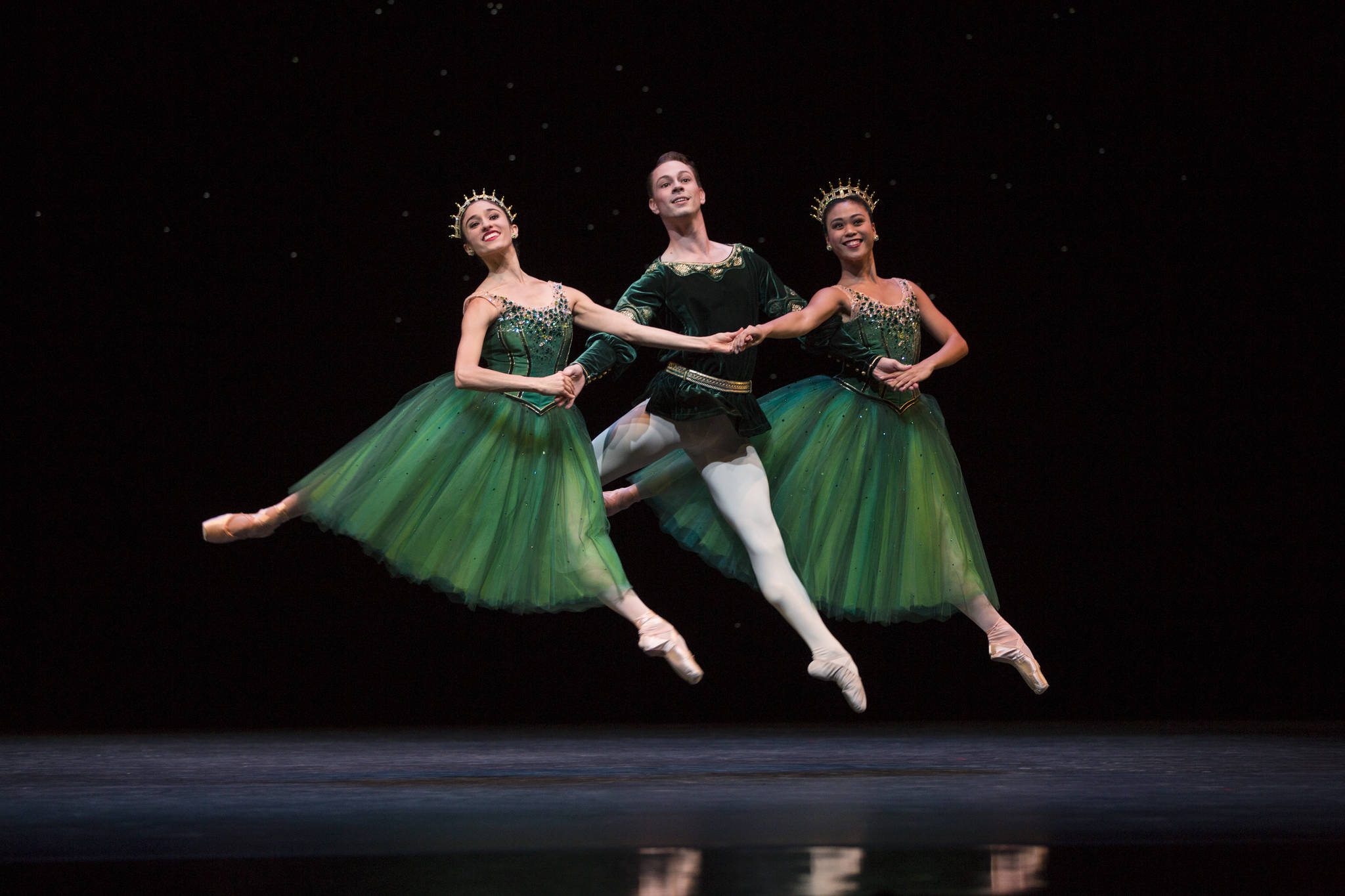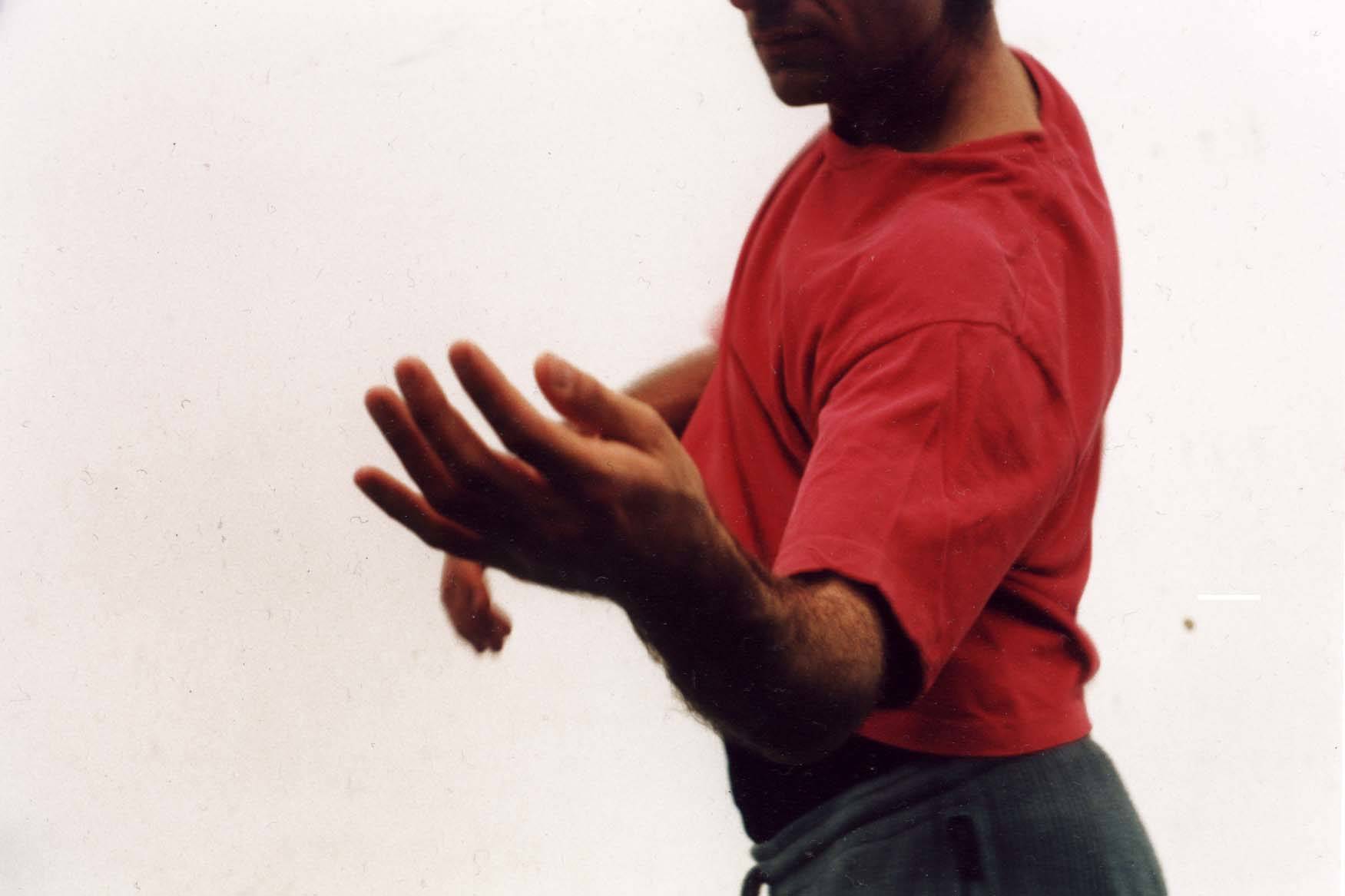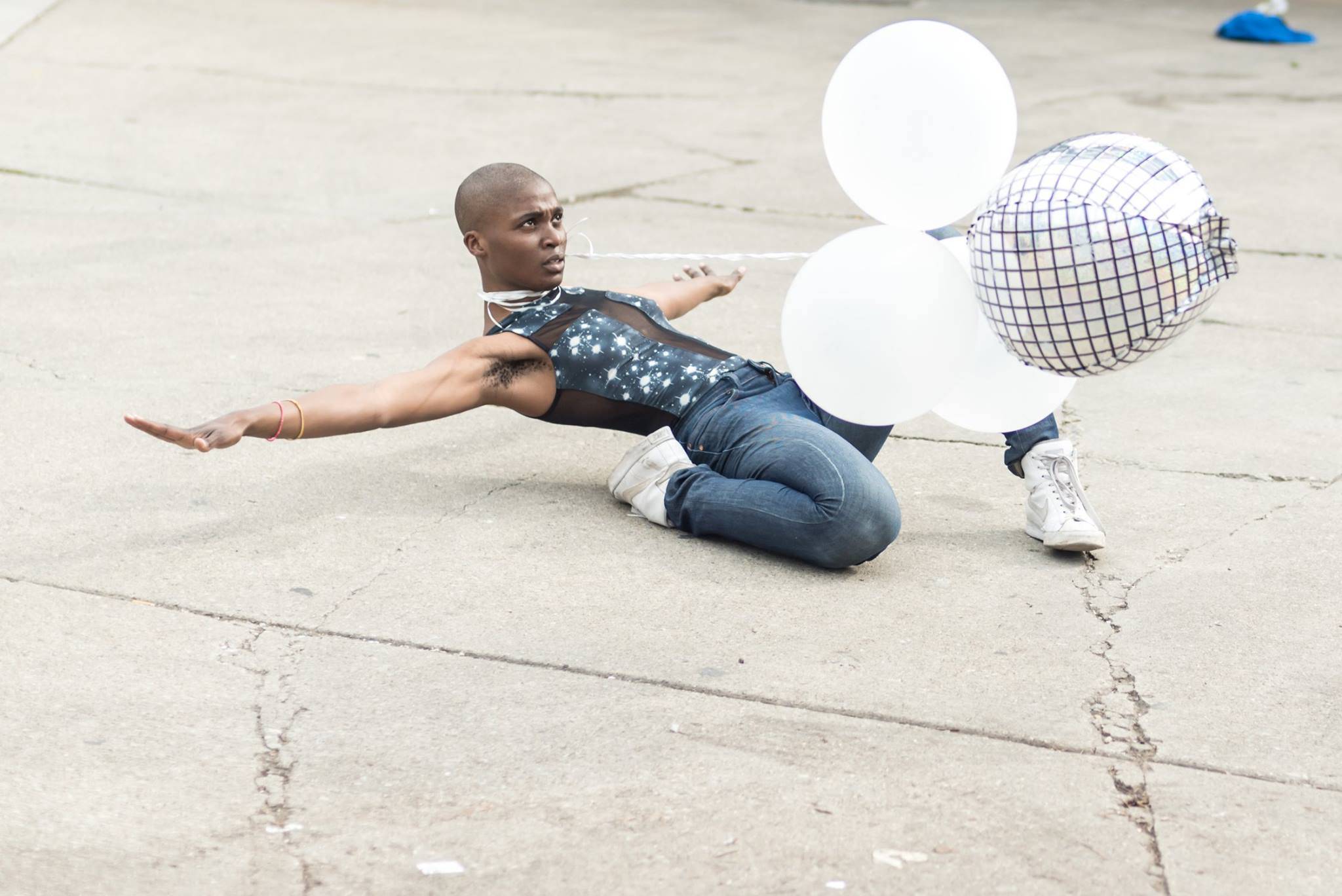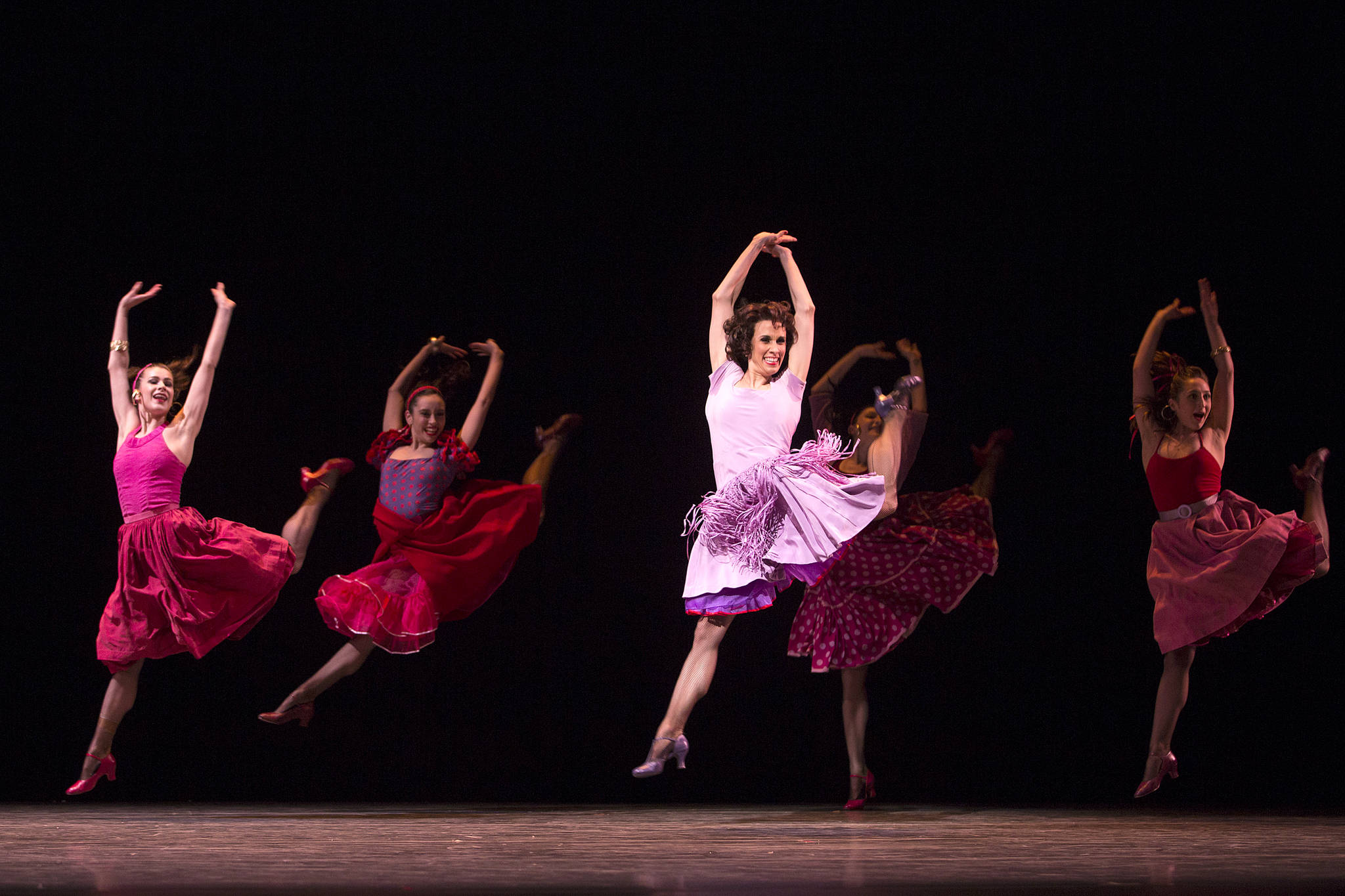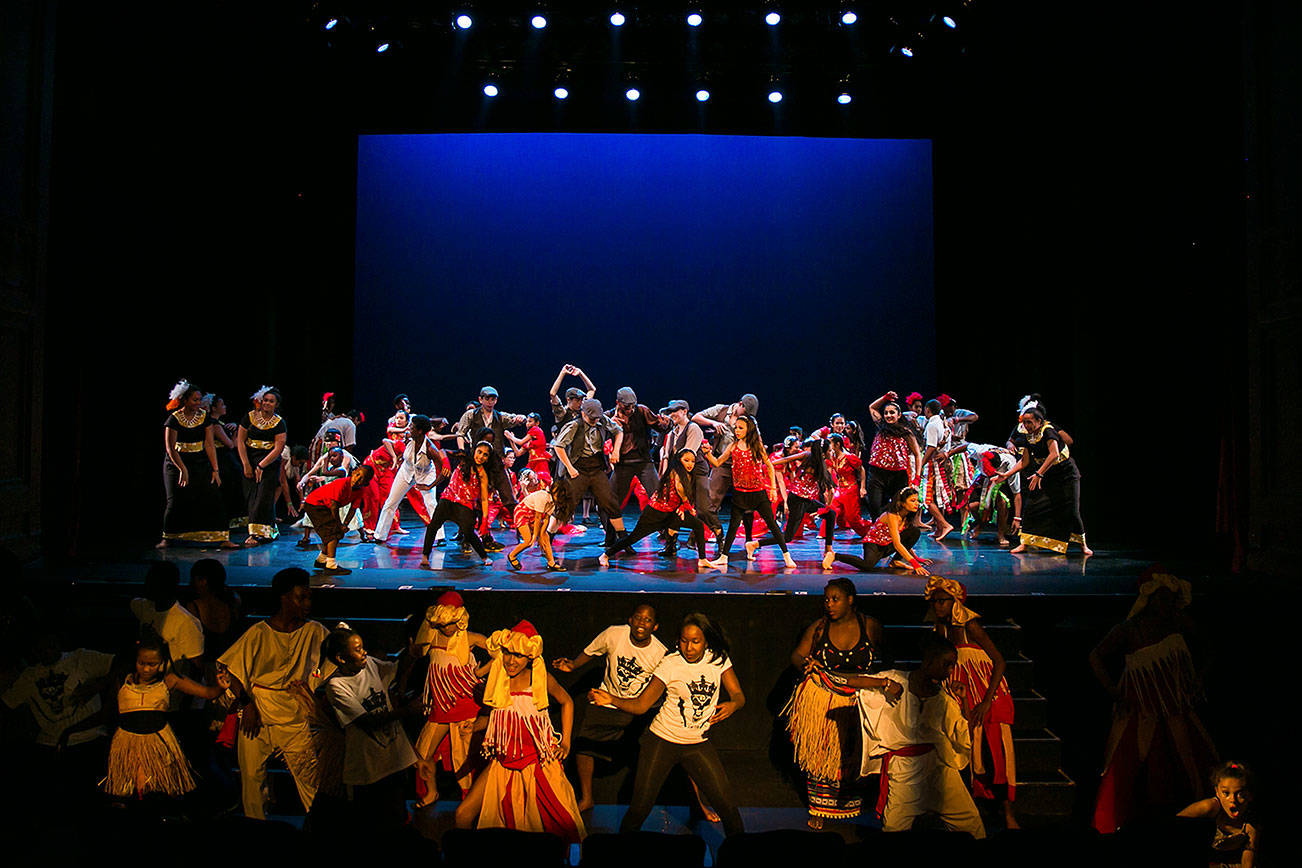When George Balanchine created Jewels in 1967, his challenge was to make a program-length abstract work that would fill the stage of the State Theater at the new Lincoln Center. Today, 50 years later, the work has become an icon of neoclassical ballet, and the challenge has shifted to the companies who dance it. Just as Swan Lake was a touchstone for classical companies in the 20th century, Jewels has become a milestone in the 21st—a ballet that you perform, in part, to prove that you can.
Pacific Northwest Ballet has had the entire work in their repertory since 2006, and it has been a beautiful showcase for individual performers as well as a quick survey of style, with its three sections hinting at three different ballet traditions. “Emeralds,” to a score by Gabriel Fauré, is full of French romanticism; “Rubies” zips along to Igor Stravinsky’s Capriccio; and “Diamonds” evokes the grandeur of Russian classicism and P.I. Tchaikovsky. On opening weekend the company fronted multiple casts, with some dancers returning to familiar roles while others made debuts.
PNB commissioned new sets and costumes for this production, in honor of the 50th anniversary. Jérôme Kaplan, who designed the company’s Giselle and the costumes for their Jean-Christophe Maillot repertory, has rung some lovely changes on the original costume designs by Karinska, deepening the green tones in “Emeralds” and adding a very pale pink to the women’s tutus in “Diamonds.” He’s brought three different variations on a frame for the setting: a starry night sky for “Emeralds,” a set of crisp black and white curtains for “Rubies,” and a giant burnished silver frame for “Diamonds,” as if the dancers have stepped out of a painting. The results are more dramatic than the Jewels of the past but don’t overpower the choreography.
“Emeralds” is probably the most subtle of the three sections, but it received a number of significant performances last weekend. Noelani Pantastico and Lucien Postlewaite have worked as partners for several years, at PNB and elsewhere, and they continued to deepen that relationship as one of the lead couples in the ballet. Their phrasing, especially in their gestures, was particularly detailed. Sarah Ricard Orza (newly promoted to principal dancer) was exceptionally poised dancing with William Lin-Yee. They conveyed a sense of both passion and regret in the “walking duet,” which transforms a simple walk on pointe across the stage into a significant journey. And Kyle Davis was a blithe presence as the fulcrum in a trio with Leta Biasucci and Angelica Generosa. All three of them bounded across the stage as hunting horns sounded in the score.
Elle Macy made an explosive debut in “Rubies,” sending her leg high overhead in the opening sequence, emphasizing the kinetic possibilities of the distorted lines. Rachel Foster and Benjamin Griffiths sometimes resemble Judy Garland and Mickey Rooney, and they brought that sunny, can-do quality to the duet opening night. James Moore did double duty in the part on Saturday, dancing with Leta Biasucci in the matinee and with Angelica Generosa in the evening, with a mischievous smile at both performances.
“Diamonds” can feel like a pocket Swan Lake without the feathers—its partnership makes all kind of references to the Petipa choreography. Lesley Rausch is returning to the female lead, and brings the confidence of that familiarity with her—her phrasing choices are very nuanced. Both Pantastico and Elizabeth Murphy made debuts in the part and are finding their own way into the role; for all three women, it will be interesting to see how this experience colors their work in February’s Swan Lake. McCaw Hall, 321 Mercer St., 441-2424. pnb.org. $30–$187. 7:30 p.m. Thurs., Sept. 28–Sat., Sept. 30; 1 p.m. Sun., Oct. 1.
dance@seattleweekly.com
